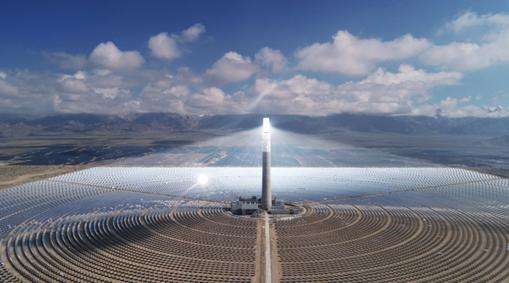At present, it should be Inner Mongolia, not because it has large installed capacity, but because it is supported by North China's power grid and wind power can be effectively transmitted. Second place should be Gansu, who made it. large capacity installed, but cannot send electricity. Xinjiang also has a lot of electricity, but it has not been developed. The power grid is backward and unable to transmit, limiting the installation and development of wind power.
How much wind does it need to blow?
1. Wind energy promotes the exchange of dry, cold and warm, humid air. Wind is a natural energy source. A long time ago, humans learned to make wind turbines and use wind energy to blow. to pump water and process food. Nowadays people also usewindmills to produce electricity.
2. The sailboat is also pushed by the wind. Wind plays many roles in daily life, but it also often causes disasters for humans. Storms, typhoons and hurricanes can flood farmland, collapse houses and interrupt water and electricity supplies. Tornadoes can wipe out cars, people, homes, and more. without leaving a trace.
3. Wind can mix and balance a wide range of heat and water vapor, adjust air temperature and humidity; it can send clouds and rain to distant places, completing the cycle of water on the earth.
4. Wind can also have a negative effect on agriculture. It can spread pathogens and spread plant diseases. High altitude winds are the weather conditions allowing pests tels that armyworms, rice leafhoppers, rice leafrollers and migratory locusts migrate long distances. Strong winds can cause mechanical scratching of leaves, lodging of crops, broken trees and falling flowers and fruits, thereby affecting yields. Strong winds also cause soil erosion, shifting sand dunes and damage to agricultural land.
5. Indiscriminate reclamation in drylands will lead to land desertification due to wind. Strong winds and snowstorms in pastoral areas can disperse herds and worsen frost damage. Certain particular characteristics of local winds often cause wind damage.
Salty tidal wind blowing from the sea, high and low temperature foehn winds and hot dry winds all seriously affect flowering and nearing of fruit trees as well as filling of cereal crops. To avoid wind damage, dwarf, lodging-resistant and scrub-resistant varieties are often grown. Building windbreaks and installing wind barriers are even more effective ways to prevent wind.
This should be around 55 m/s. This number is close to the terminal velocity of the human body in free fall. Free fall terminal velocity is the speed when wind resistance = gravity. To stand upright into the wind, the wind speed must be less than 55 m/s. If it is considered vertical if it is tilted below 10 degrees, the wind speed cannot exceed 26 m/s. If the shoe/foot is stationary relative to the ground this does not count as flying, you need to take into account the coefficient of static friction between. the shoe/bare feet and the ground. The shoes are stupidthought of like rubber. The coefficient of friction between rubber and dry asphalt/cement is approximately 0.6 to 0.9. The wind speed exceeds 30 m/s and it can remain stationary. The coefficient of friction between human skin and other materials has not been found. should also exceed 30 m/s bar. Digression: If you do the experiment, you might be able to do it in water. The resistance of water is 800 times greater than that of air. Dimensional analysis can then determine the required air speed. However, I don't know how to eliminate the buoyancy factor that can be ignored in air in water. A parentheses: According to the surface (wind resistance) the volume (weight).) is the relationship between the 2nd power and the 3rd power. Big people are harder to blow up. Some scenes we see in ** won't happen in reality: for example, people who are shot won't flys backwards, like for example. vacuum won't make your skin explode. But strong winds can definitely blow someone up. In fact, if you were in a parking lot, the wind would not only blow you away, but it would even tear off a layer of the roadway! When the wind speed reaches 120 kilometers per hour, no matter how much you lean forward, you will no longer be able to stand; you will first slide backwards on the ground, then fall and start doing somersaults. But you are less likely to be “thrown” very high by the wind. If the wind blows completely horizontally, you will trip and fall. If you are lucky enough to hit a slope, you will easily fly into the sky and fall far away. The good news is that winds of 500 km/h are very rare. The strongest hurricanes can reach wind speeds of around 200 kilometers per hour, and gusts can even reachachieve speeds of up to 250 kilometers per hour. Tornadoes can reach speeds of 300 miles per hour. But we are still far from 500 miles per hour. A 500 mph wind generates several times the force of a 300 mph wind.














